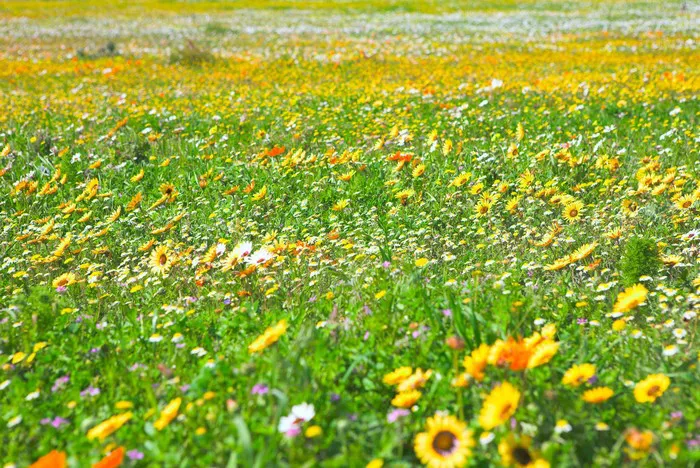California, renowned for its diverse landscapes, is gearing up for a breathtaking natural spectacle following record rainfall. As spring unfolds, the Golden State’s deserts are poised to burst into a vibrant display of wildflowers, offering a striking contrast to the typically arid terrain.
According to Danny McCamish, senior environmental scientist at Anza-Borrego Desert State Park in eastern San Diego County, California, the region is currently teeming with an abundance of wildflowers. Splashes of bright purple sand-verbena, yellow desert sunflowers, and creamy white dune evening primrose are painting swathes of the park’s landscape.
The term “superbloom” has been coined to describe the phenomenon of vast quantities of wildflowers blooming simultaneously, carpeting the desert floor for miles. While not a scientific designation, it signifies a rare occurrence necessitating specific climatic conditions. Last year’s superbloom marked the first in four years, and experts from California State Parks are optimistic about another robust wildflower season this year.
Naomi Fraga, director of conservation programs at California Botanic Garden, highlights the critical environmental factors driving this floral spectacle. Adequate rainfall followed by cooler spring temperatures is crucial for wildflower seed germination. However, excessively high temperatures or strong winds can quickly parch the delicate seedlings, thwarting their ability to bloom.
Despite expectations that this year’s superbloom may not reach the same magnitude as the 2023 event, optimism abounds for a substantial floral display. Fraga reminisces about the overwhelming sensory experience of wandering through fields of wildflowers, noting their captivating fragrances, ranging from the aromatic allure of roses to unexpected scents reminiscent of ramen noodles.
Different regions of California witness wildflower blooms at varying times, typically from mid-March through May. To aid enthusiasts in planning their visits, California State Parks provides regular bloom updates and visitor tips on their website. Additionally, the Theodore Payne Foundation operates a wildflower hotline, offering weekly updates on prime viewing locations from March to May.
Currently, Anza-Borrego Desert State Park is undergoing significant blooms, expected to peak in the coming days. The park provides an interactive map detailing current bloom locations, facilitating visitor planning. Notably, the Antelope Valley Poppy Reserve in the Mojave Desert is also experiencing sporadic but notable poppy blooms, expected to surpass last year’s display if mild weather persists.
However, the surge in visitors drawn to witness these floral spectacles has raised concerns about environmental damage. In previous years, overcrowding led to traffic congestion and habitat destruction, prompting officials to close areas like Lake Elsinore in 2019 due to safety concerns. Armando Quintero, director of California State Parks, urges visitors to tread lightly, staying on designated trails and refraining from picking or trampling the wildflowers to preserve their natural beauty for future generations.
As California braces for its annual wildflower extravaganza, the stage is set for a dazzling display of nature’s splendor, offering travelers a rare opportunity to immerse themselves in the ephemeral beauty of the Golden State’s wild landscapes.


